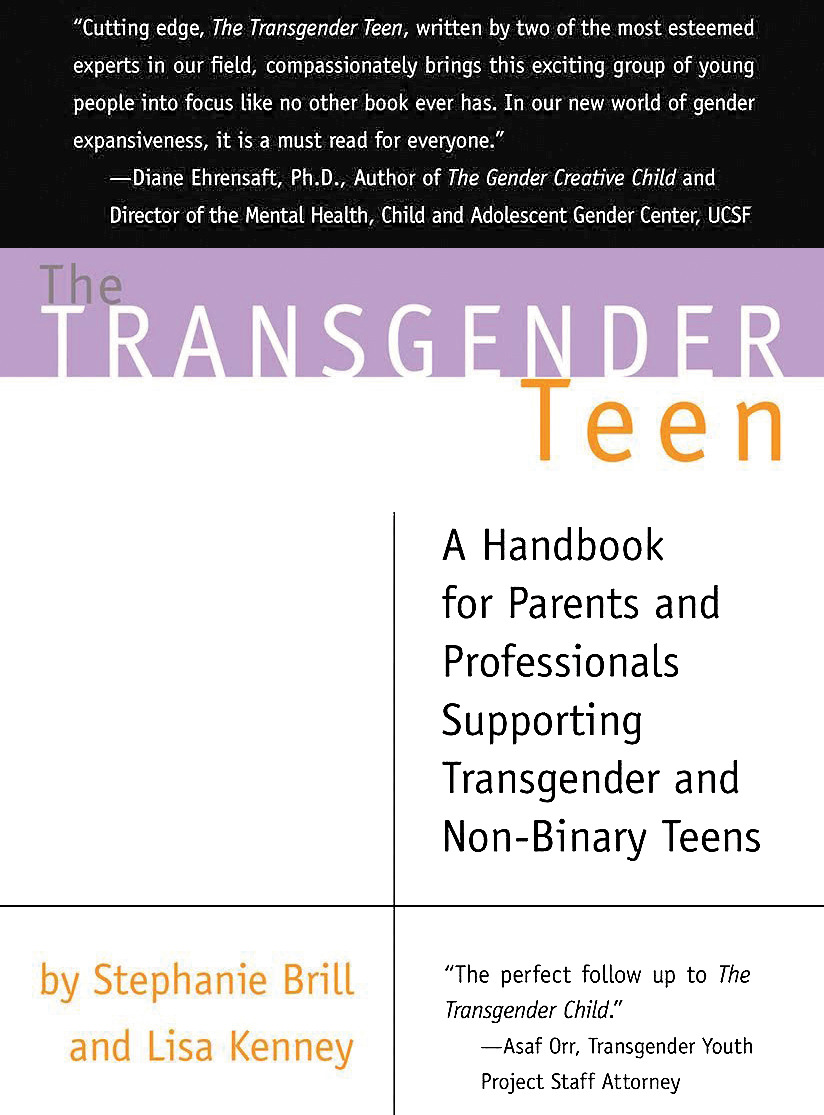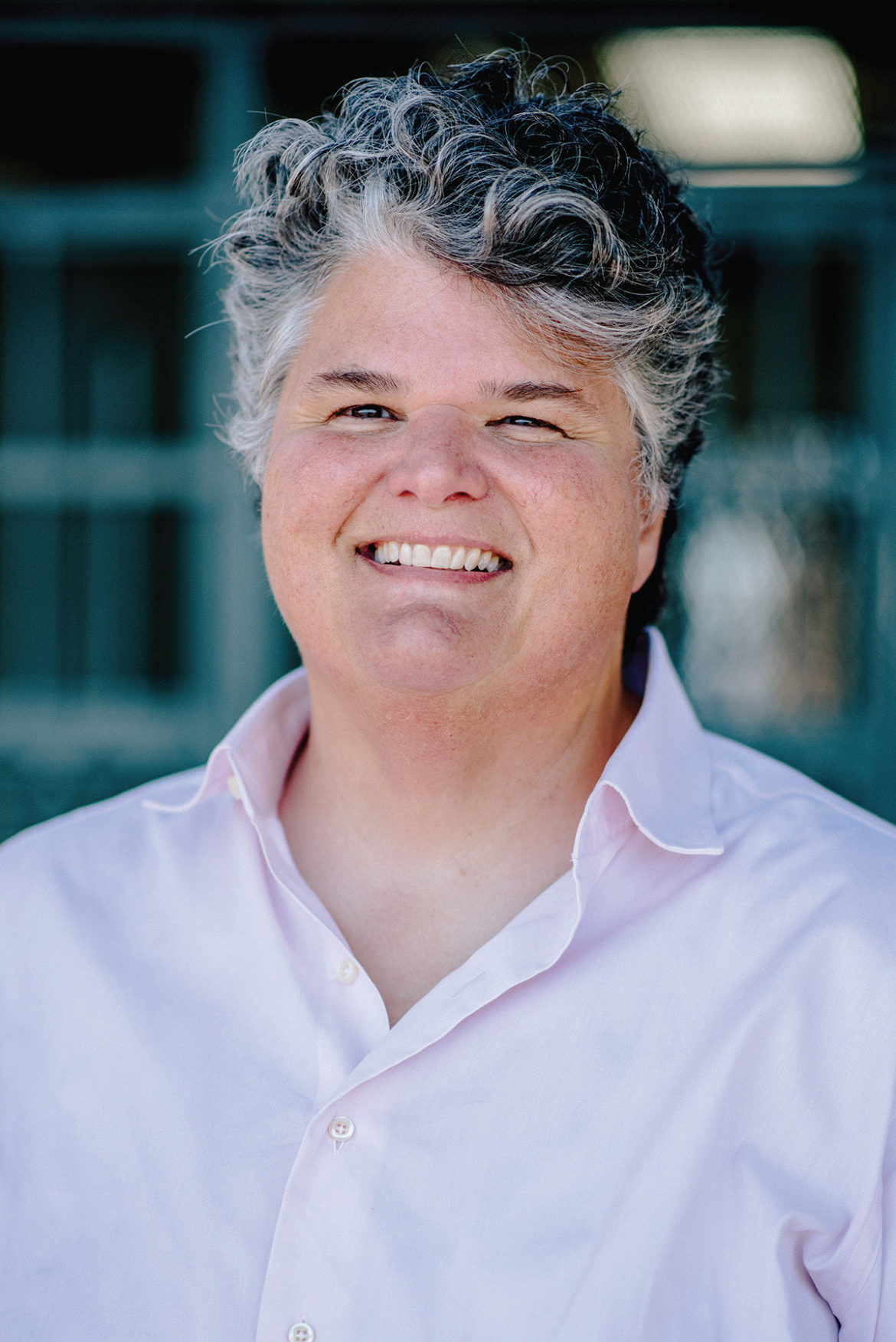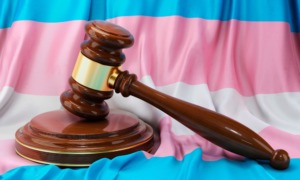This Q&A with Lisa Kenney, executive director of Gender Spectrum, was conducted by Youth Today’s managing editor Rachel Alterman Wallack. It has been condensed and edited for clarity.
The conversation

Courtesy of Lisa Kenney
The Transgender Teen handbook cover
Describe this handbook for adults who care for youth.
Lisa Kenny: The handbook is both vocabulary and ideas, and addresses the kinds of questions adults have. Like, is this just a fad? Is this just something teens are making up to get attention? The book takes everyday questions and helps provides some context for why they’re coming up.
The first thing adults who work with youth have to do is really understand what’s going on with gender. The ways in which we understand and express gender are changing. To be effective in the work we are doing, we need to be competent in navigating in this new world.
That’s not the same thing as one’s sex. There’s a difference between gender and sex. And it’s not sexual orientation. So, we’re not talking about sex, or sexual behavior — that’s a different conversation.
That certainly includes understanding the rapidly developing language of gender, but it’s more than that. It is understanding the ways in which gender is seen in different ways by so many, how the conversation, expectations, behaviors, etc., regarding gender has — and is continuing — to change.
We’ve been working a long time to give girls permission to operate outside of traditional gender norms (whether that’s clothing or profession) but we’ve held boys in a very strict binary position. Now we see boys wanting to break out of that: For example, wearing skirts or dresses because they’re comfortable. It’s possible to be cisgender with a male body and like skirts and dresses and think they’re comfortable.
What about those who say: Identity formation is a key task of adolescence. It’s a phase. It’s just “cool” to be nonconforming?
Kenny: Identity formation/consolidation is a key task of adolescence. But gender identity doesn’t begin and end in adolescence. According to the American Academy of Pediatrics, by age 4 most children have a stable sense of their gender identity.
This isn’t just true for cisgender kids [who identify with the gender they are born with], but all kids. We don’t question when preschoolers and elementary school age kids identify their gender if it is consistent with their assigned sex/assumed gender at birth; we only question them and say they can’t know when they don’t say [that].
I don’t think it’s because it’s the cool thing. Listen, it’s not fun being a kid who falls outside the gender norms. You get isolated in a lot of ways, even if people seem to be relatively cool with it. You’re still excluded from social events and the conversation: if you identify as a girl and they’re talking about getting their periods and you have a penis and aren’t getting your period — you’re forgetting what it’s like when you were in middle school or high school.
What’s at stake here?
Kenny: We know from the research that more than 40 percent of trans youth attempt suicide. That isn’t something as a society we should accept. Nonbinary youth represent another significant population of youth who are struggling. Beyond suicide, we know transgender and nonbinary youth are also at significant risk for nonsuicidal self-injury and addiction. These statistics are horrifying.
Parents and professionals are always asking, what can we do? It seems like this population is really at risk and there’s a sense of futility. We say there’s actually a lot we can do.
We know that 93 percent of youth who [have] strongly supportive parents and who have thought about suicide did not attempt it. For professionals, we might be that one person that they dare the risk to share with. We may not get a second at-bat.
If we don’t have a sense of it, we may not have a second chance to talk to that child in foster care or that student.
If you have youth in your life — personally or professionally or both — it’s essential to understand this issue. Increasingly, they’re going to look for someone who’s safe to think this through with, and if that’s you, we have a responsibility because we might be that lifeline.
They aren’t looking for us to pave the way, just someone who is listening and supports them and says, “I want to be there to help you figure that out.”
Would you share a little about your work as executive director of Gender Spectrum, the workshops you created and the film you co-created, “Creating Gender Inclusive Schools”?

Lisa Kenney
Kenny: We do a tremendous amount of work with youth development professionals. … this year alone we’ve done workshops for about 7,000 educators. …
We’ve also done workshops for youth-serving professionals in foster care, juvenile justice, etc. This work is core to us.
However, we know that in order to reach the largest number of professionals, many of whom are trying their best with evolving understandings of gender, with very few resources available, we need to use every means available to try and provide this information.
Making sense of the issues related to gender isn’t easy, and things are changing relatively fast. The film and this book are both ways to connect with professionals and parents, as are the workshops we provide and the online community and programming we also provide.
What do you recommend for youth workers or for youth themselves?
Kenny: Understand what the issues are and why they’re coming up now. An acknowledgement that some of the issues can seem really crazy — but it’s important to understand what’s really going on.
You don’t have to be the expert. You just have to be the safe place.
We know anecdotally from youth that we work with that a teacher, youth worker, or other professional they have in their life can also have a life-saving effect. All of us have, I think, a moral and ethical responsibility to do what we can to be that person in someone’s life. Someone who lets that youth know there is nothing wrong with them, that they are OK, and talk with them about the ways in which they can successfully navigate their world.
Professionals can bridge the gap by talking with youth about how they [young people] see gender and the language they use to describe their gender. Letting youth be teachers not only allows us to better understand their experience and bridge the communication gap, but also empowers them to name and describe their experience, creating a sense of self-esteem desperately needed by transgender and nonbinary youth.
Lisa Kenney is the executive director of Gender Spectrum, a San Francisco-based organization that aims to foster “sensitive and inclusive environments for all children and teens.” Co-author Stephanie Brill is the founder and board chair of Gender Spectrum.
































